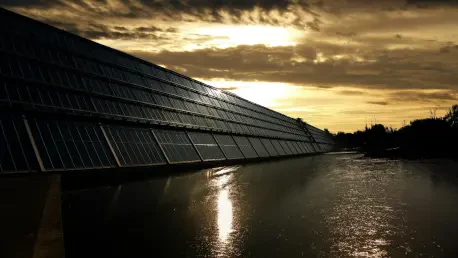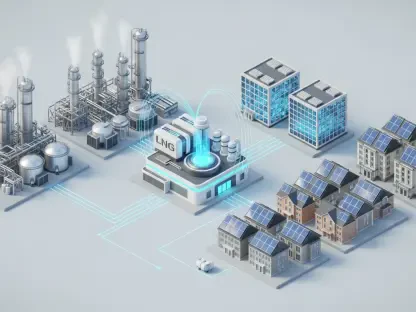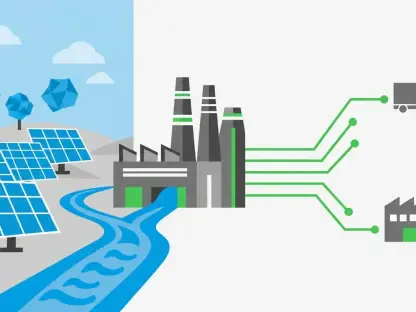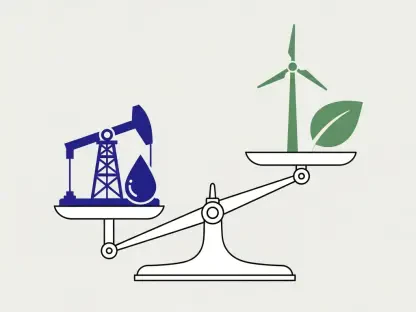The solar industry stands at a pivotal moment as silver prices surge to nearly $50 per ounce, a sharp rise from just $44 a few weeks ago, creating unprecedented challenges for photovoltaic (PV) manufacturers who rely heavily on this metal. Silver, a crucial component in solar cell metallization for its ability to conduct electricity efficiently, has become a significant cost factor, threatening profit margins across the sector. With the demand for solar energy continuing to grow globally, the pressure is on to find ways to reduce reliance on this expensive metal without undermining the performance or reliability of solar products. This situation has sparked a wave of innovation and strategic rethinking, often referred to as “thrifting,” aimed at cutting silver usage. The question remains whether the industry can maintain its momentum and affordability in the face of these rising costs. This article explores the economic drivers behind this shift, the potential of thrifting as a solution, the inherent risks, and the innovative alternatives shaping the future of solar manufacturing.
Economic Forces Pushing for Adaptation
The dramatic increase in silver prices is sounding an alarm for the PV industry, where this metal plays an indispensable role in creating conductive contacts within solar cells. As costs climb, manufacturers face shrinking profit margins, compelling them to reassess their dependency on silver to keep solar energy competitive. This economic challenge is not merely about immediate financial strain but about ensuring that solar power remains a viable and affordable energy solution amidst a booming global market. The urgency to adapt is amplified by the need to meet rising demand without passing exorbitant costs onto consumers. Reducing silver usage has thus become a strategic imperative, pushing companies to explore every avenue to maintain their edge in an increasingly cost-sensitive landscape. This financial pressure is reshaping priorities, with a clear focus on balancing affordability with the high standards expected from solar technology.
Beyond the immediate cost concerns, the broader implications of silver’s price surge are reshaping the industry’s long-term outlook. High silver costs could slow the adoption of solar energy in price-sensitive regions if alternatives or reductions aren’t implemented effectively. This economic reality is driving a cultural shift within the sector toward sustainability in material use, prompting manufacturers to invest in research and development to mitigate reliance on volatile commodities. The stakes are high, as failure to adapt could cede market share to other renewable energy sources or delay critical climate goals. Yet, this challenge also presents an opportunity to innovate, as companies are forced to think creatively about how to deliver efficient solar solutions under tighter financial constraints. The outcome of these efforts will likely set the tone for the industry’s resilience in navigating future resource scarcity.
Thrifting as a Strategic Solution
Thrifting, the process of reducing silver content in solar cells and modules, emerges as a key strategy to counter the escalating costs without sacrificing quality. Experts from institutions like the University of New South Wales (UNSW) and the Fraunhofer Institute for Solar Energy Systems (Fraunhofer ISE) assert that with meticulous engineering and precise control over manufacturing processes, silver usage can be minimized while preserving the efficiency and durability of solar products. This approach relies on optimizing existing designs to ensure that even with less silver, the electrical conductivity and structural integrity of cells remain uncompromised. Such optimism is grounded in the belief that current technological capabilities can support this transition if applied with precision. Thrifting, therefore, is not seen as a compromise but as a necessary evolution in response to economic realities.
The potential of thrifting extends beyond immediate cost savings to influence the scalability of solar technology. By refining production techniques, manufacturers can reduce material expenses while maintaining output levels, which is critical for meeting global energy demands. Innovations in design, such as adjusting the thickness of conductive layers or enhancing process controls, are central to making thrifting viable on a large scale. This strategy also encourages a mindset of resource efficiency, aligning with broader environmental goals of minimizing waste and over-reliance on finite materials. While challenges remain in ensuring uniform quality across mass production, the consensus among researchers is that thrifting represents a feasible path forward. Success in this area could redefine manufacturing standards, proving that economic constraints can drive meaningful progress rather than hinder it.
Navigating the Risks of Silver Reduction
Despite the promise of thrifting, reducing silver content in solar cells carries notable risks that must be carefully managed to avoid undermining performance. Improper implementation could lead to increased electrical resistance, which hampers the efficiency of energy transfer within cells, or weaker soldering connections that compromise structural stability. Long-term reliability is another concern, as reduced silver might affect a product’s lifespan under varying environmental conditions. These potential pitfalls highlight the need for rigorous testing and quality assurance to ensure that cost-cutting measures do not erode consumer trust in solar technology. The industry must tread cautiously, balancing the drive for savings with the imperative to deliver dependable, high-performing products that meet market expectations.
Further complicating the shift to lower silver usage are specific technical challenges, such as issues with cell interconnection in busbarless designs. If conductive components are scaled back excessively, maintaining seamless connections becomes difficult, potentially disrupting the overall functionality of solar modules. However, researchers remain confident that these hurdles can be surmounted through targeted engineering solutions and advancements in manufacturing precision. The focus is on developing adaptive techniques that mitigate these risks without reverting to higher silver content. By addressing these challenges head-on, the PV sector can build resilience against material cost fluctuations while upholding the standards of innovation that define it. This careful navigation of risks will be crucial in sustaining the momentum of solar adoption worldwide.
Exploring Alternatives to Traditional Materials
Looking beyond thrifting, the solar industry is actively investigating alternative materials to replace silver, with metals like copper, aluminum, and nickel emerging as viable contenders. Copper, in particular, stands out for its cost-effectiveness and conductivity, though it faces hurdles such as oxidation and integration challenges in certain solar technologies. Techniques like multi-busbar layouts, fine-line stencil screen printing, and copper electroplating are gaining traction as methods to reduce silver dependency while maintaining performance levels. Additionally, hybrid metallization strategies, already implemented in commercial heterojunction (HJT) solar cells, combine silver with cheaper materials to strike a balance between cost and efficiency. These developments signal a shift toward diversified approaches that could redefine material use in solar manufacturing.
The pursuit of alternatives is not just a response to cost but a proactive step toward long-term sustainability in the PV sector. Research into novel materials and processes, such as screen-printable copper pastes, shows promising early results that could address reliability concerns over time. This exploration also fosters collaboration across the industry, as companies and research institutions work together to refine these solutions for commercial scalability. The adoption of alternative metals aligns with the broader goal of reducing environmental impact by minimizing reliance on scarce resources. While the transition requires overcoming technical barriers, the momentum behind these innovations suggests a future where solar cells are both more affordable and more sustainable. This shift could ultimately broaden access to clean energy across diverse markets.
Shaping a Sustainable Path Forward
The overarching trend in the PV industry reflects a determined push toward sustainability and cost efficiency, catalyzed by the unrelenting rise in silver prices. This economic pressure has accelerated research into alternative materials and optimized designs, with copper emerging as a leading substitute despite challenges like oxidation and reliability in specific applications such as tunnel oxide passivated contact (TOPCon) modules. The rapid pace of innovation, evidenced by advancements in copper-based pastes and hybrid metallization, underscores the sector’s adaptability to external constraints. This movement is not just about survival but about reimagining how solar technology can thrive under new economic realities, ensuring that clean energy remains a cornerstone of global energy strategies.
Reflecting on these developments, it’s clear that the response to silver cost challenges has sparked a transformative era for solar manufacturing. The industry has tackled economic pressures with a blend of thrifting and material innovation, demonstrating resilience through strategic adaptation. Looking ahead, the focus should be on scaling these solutions—refining thrifting techniques and perfecting alternative materials like copper for widespread use. Collaborative efforts between manufacturers and research bodies will be essential to address lingering technical issues. By investing in these areas, the sector can ensure that solar energy remains accessible and efficient, paving the way for a future where cost barriers do not impede sustainable progress.









